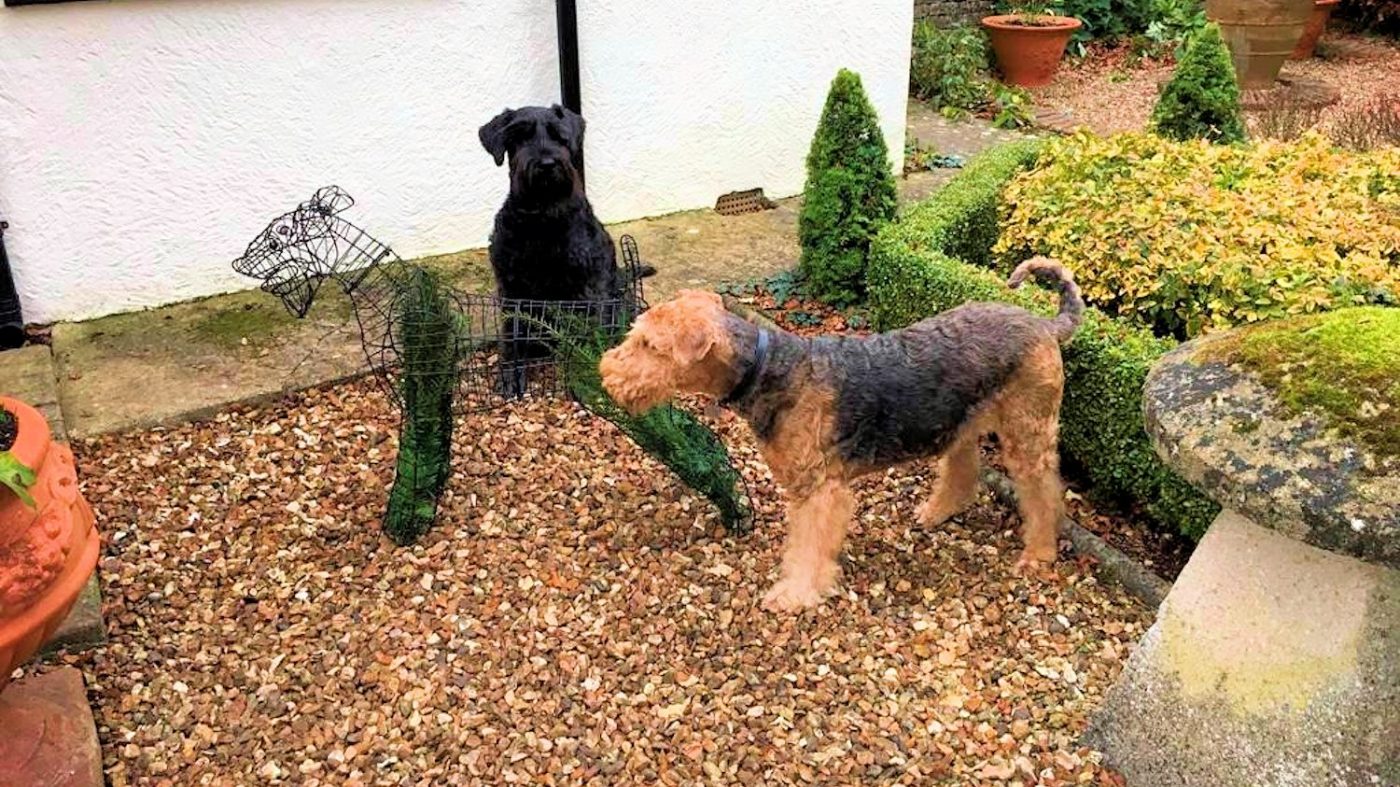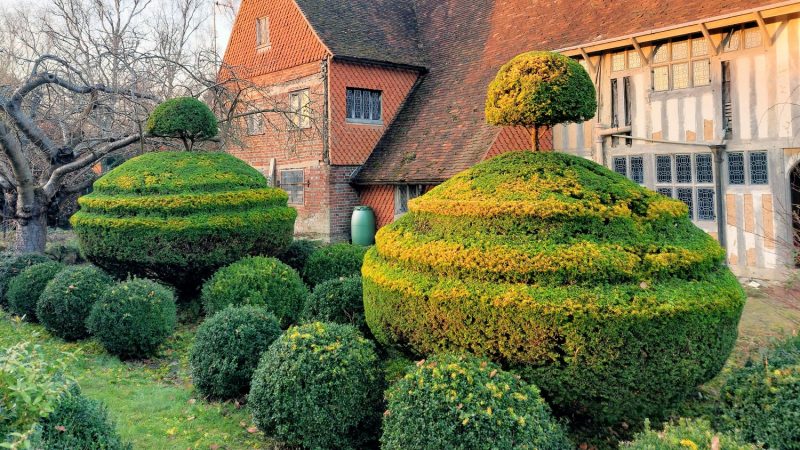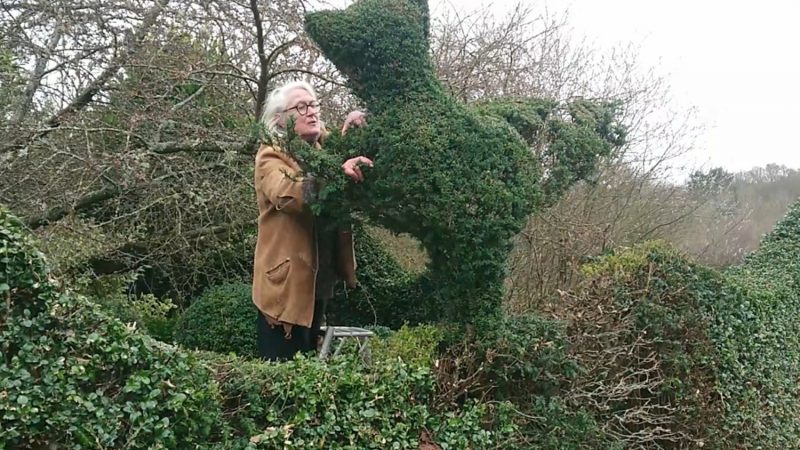The Airedale Project
By Lynda Hinton
I have an Airedale terrier (and another big black dog). I felt I needed a new topiary challenge and decided upon an installation. Most of my Topiary is free range and not framed.
The plants, bought from a local garden centre, were well furnished and about 30 inches tall with the main stem being about 1.5 cm in diameter at the base.
Airedale frames are available on the internet from several different suppliers. I chose Top Topiary (Jason, the proprietor, used to be a member of EBTS) to supply the frame. It came in three sections, well protected and packaged neatly into a largish box directly from Belgium.
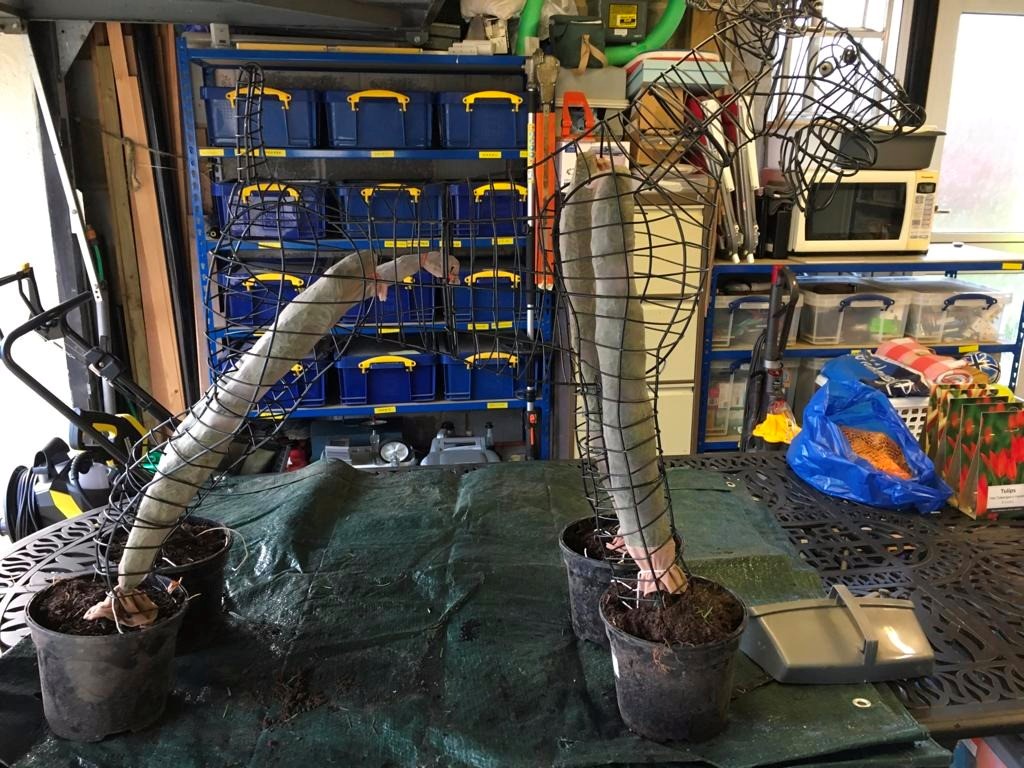
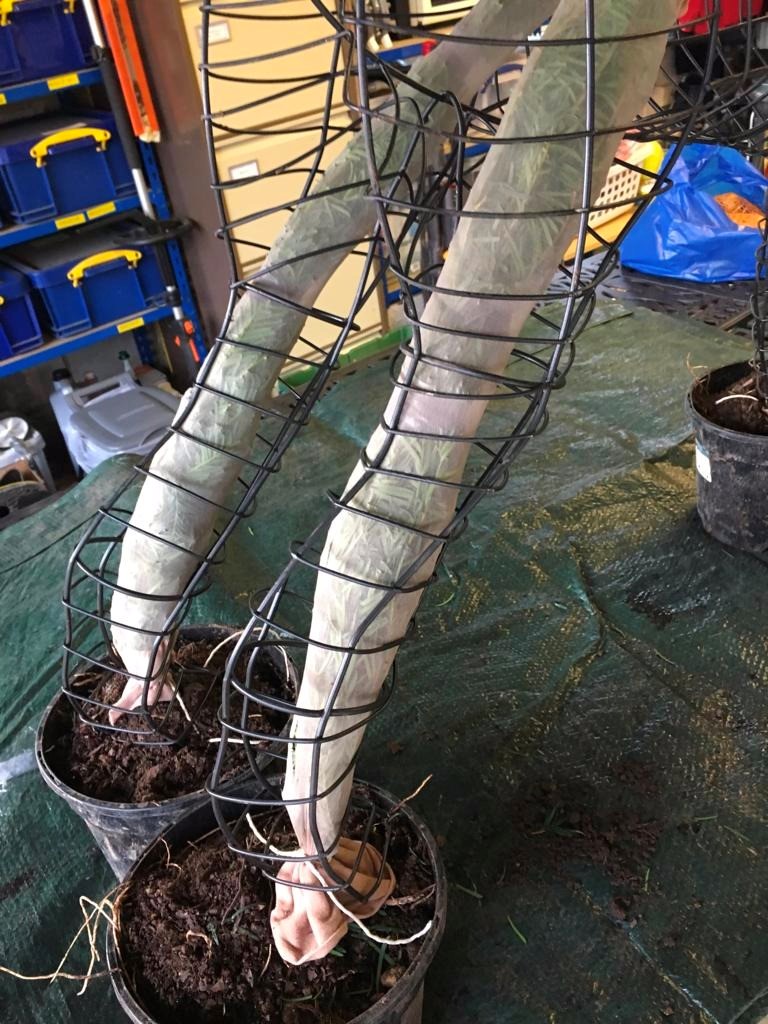
Assemblage was easy. Back leg section to front leg section, then the head to the whole. Just a couple of clip fixings. I snipped out the bottom of the feet in order to stuff the four common yew, Taxus baccata up the legs. This proved impossible with too many unruly branches. I sacrificed two pairs of tights and sleeved each plant into a leg!

I prepared large holes using topsoil purchased from a garden centre, firmed and watered well.The assembled animal was carried to the prepared site and lowered into the holes.
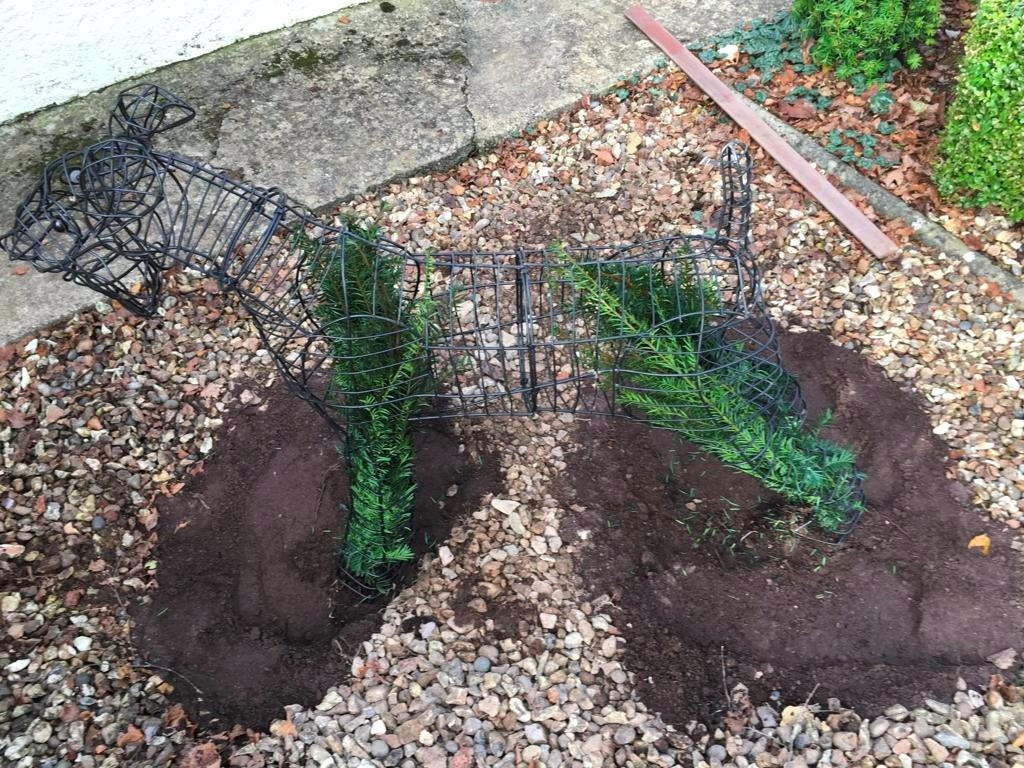
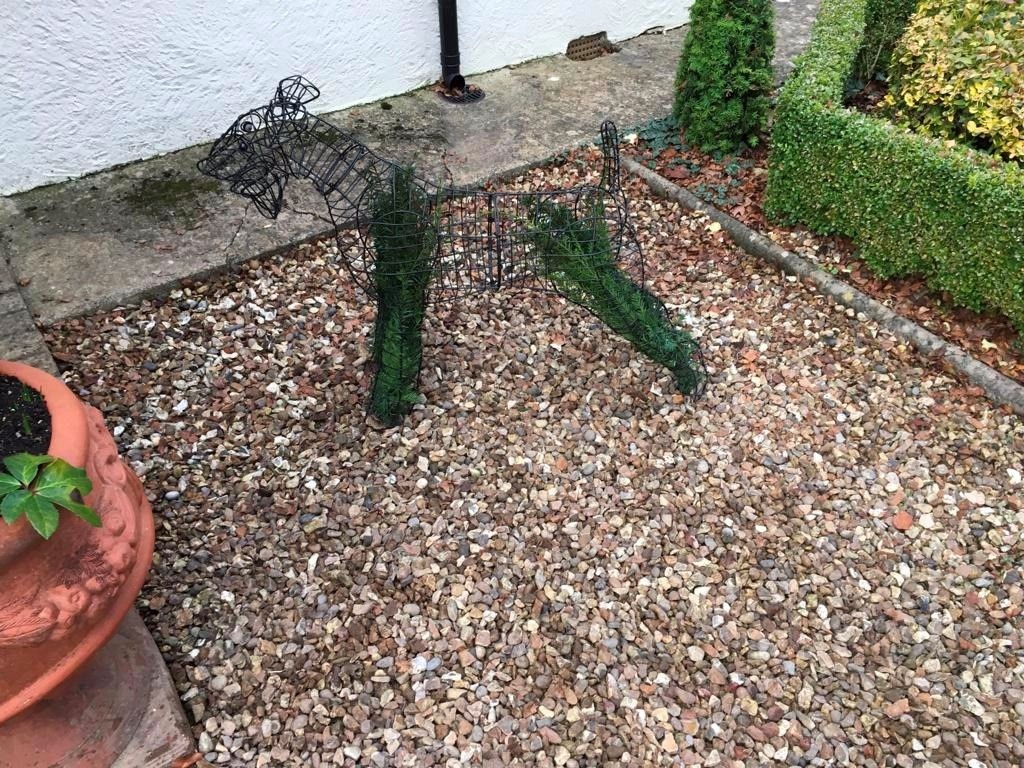
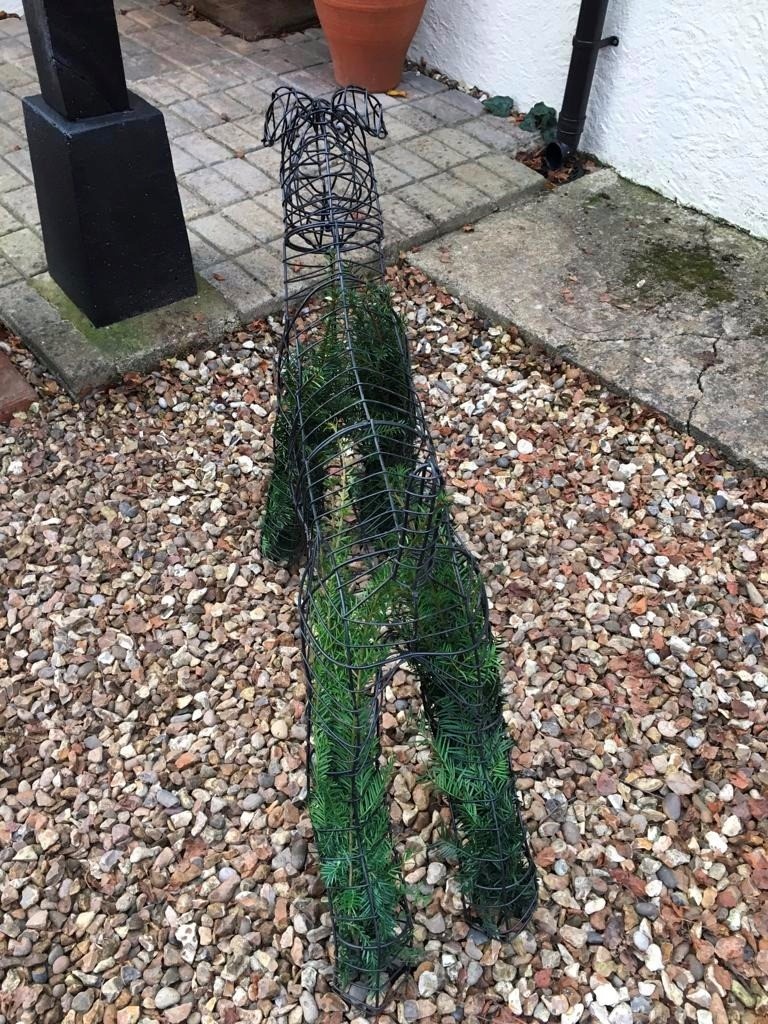

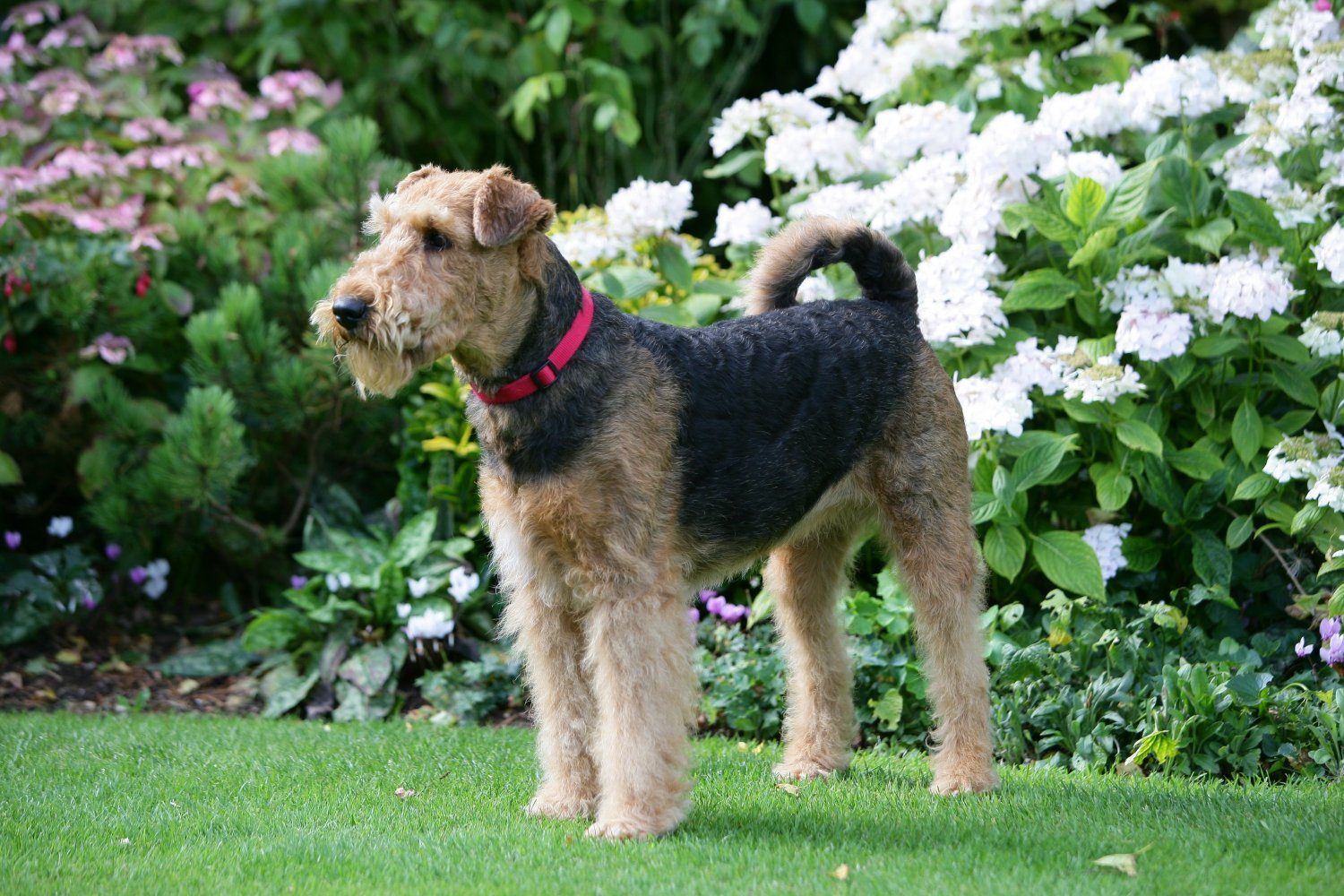
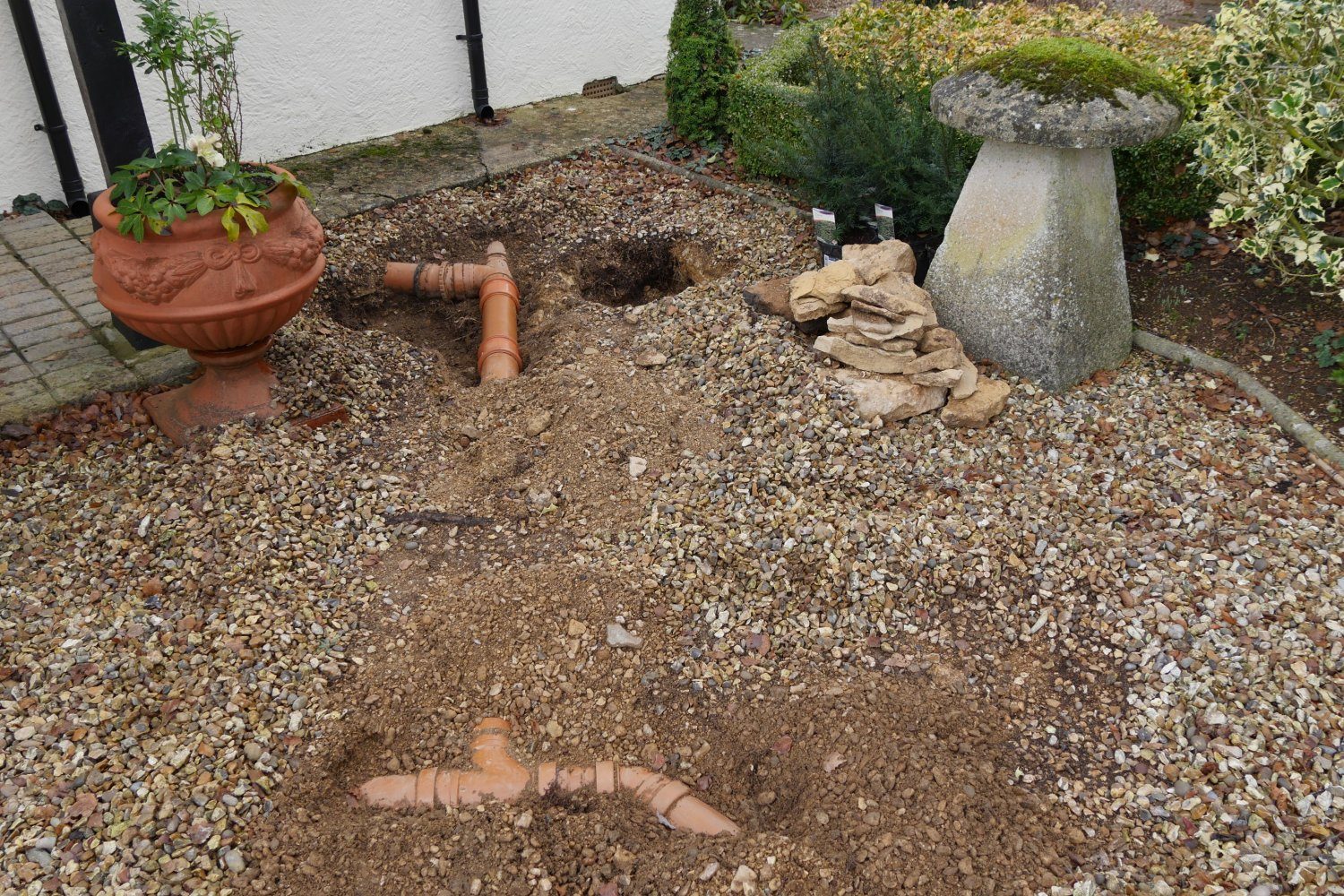
N.B. Does any project ever run smoothly! Several hours of positioning, walking back and forth along the drive, road, etc resulted in only one possible position. The relation to the house, the path and parterre and the side-on view of the animal was perfect in my vision. The choice of position, excavation and discovery of the soak aways led to subsequent replacement of some pipework. Hmmmm!
I’m allowing them to establish before starting to clip off extra foliage through the wire. It is a bit fiddly but I’ve experimented with vine pruning snips for this as they have slim, long pointed blades.
These type of wire frames are also used for quick result topiary, that is, covering with ivy or filling with moss but I’m hoping the long haul will give a substantial welcome to my front door.
Lynda Hinton

